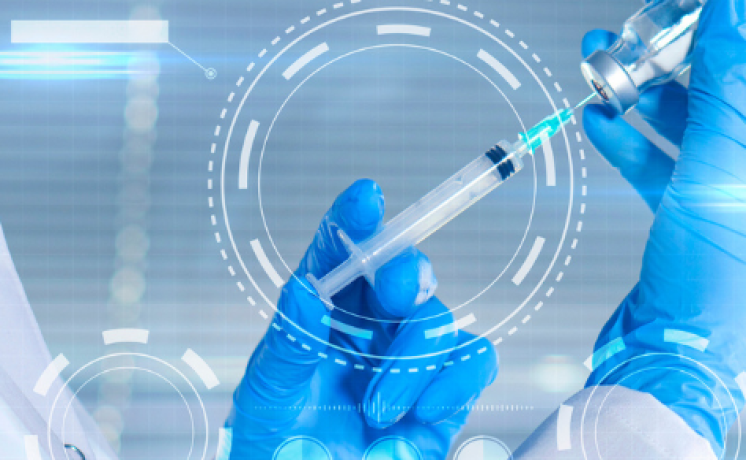The following questions were asked during the EU MDR Date of Application Readiness webinar presented by Jay Crowley, Vice President of Medical Device Solutions and Services at USDM.
Watch the on-demand webinar: EU MDR Date of Application Readiness
Is Actor registration in EUDAMED still voluntary? If so, what does this mean for Importers?
Assuming the relevant Competent Authority (CA) is participating, Importers can register and obtain a Single Registration Number (SRN). However, this is not required until the European Database on Medical Devices (EUDAMED) is made fully functional and available.
What happens if the Authorized Representative (AR) has not completed their verification of information for legacy product registration by 26 May 2021?
Since only Medical Device Regulation (MDR)-compliant devices can be placed on the market after the Date of Application (DoA)—including Legacy devices—you must have a signed MDR agreement in place with your AR. However, these devices should not require a formal document review until they transition to an MDR CE certificate. This is not true for Class I self-certified devices, which will need to be MDR compliant by DoA, and will need to a reviewed by your AR.
Our Periodic Safety Update Report (PSUR) drafts are prepared. The module in EUDAMED is not yet available. What is the next step relative to notified body (NB) review of these reports? Do we submit the PSURs to the NB directly?
Yes, for Class III and implantable devices, the PSUR is always submitted to the NB directly (in the case of EUDAMED unavailability), but check with your NB to determine how they want to receive it until EUDAMED is available.
With respect to the MD symbol, there are two applications: one as “Medical Device,” but on Patient Implant Cards, the MD symbol corresponds to the brand name. Why are there two meanings now?
Yes, that decision was made by the Medical Device Coordination Group (MDCG). In the MDCG 2019-8 v2 guidance document it states, “Please note that in the ISO context, the ‘MD’ symbol is used to identify that the product in question is a medical device. On the implant card, this symbol is used to indicate the device name.”
Since it’s unlikely there will be harmonized standards for EU MDR available at the DoA, what affect does that have on the ability to use standards for conformity assessment?
That is up to your NB and whether they will allow you to apply them prior to harmonization (noting how differences between the requirements of directives and regulations have been taken into account). There has been progress in that CEN-Cenelec have agreed to revise the many existing standards listed under the directives and draft the required new standards for the new regulations.
Can you elaborate on the newly proposed Master UDI-DI by the EU Commission?
It is too early in the process to go into much detail. All we know is that its purpose is to find a solution for grouping devices with many individual permutations (e.g., contact lenses) to reduce the number of records in EUDAMED. We also know that the Master UDI-DI will be a production identifier (PI) in the UDI. The Commission will need to publish an Implementing Act to add this new requirement.
Our AR has informed us that the German Competent Authority is not issuing SRNs as EUDAMED is still “voluntary.” Do you see this being an issue when submitting to NBs for MDR CE certification?
No, this is not an issue as EUDAMED is still voluntary, as is generating SRNs. Other CAs are also not issuing SRNs.
Does the GS1 Global Model Number (GMN) and the Basic UDI-DI have any other useful purpose as we integrate it into our product? Would it benefit anyone to include for non CE-marked products?
There are other regulators considering the use of Basic UDI-DI (GS1’s GMN); however, at this point, only the EU is requiring its use.
If a Class III device (MDD) is not placed on the market, then is the BUDI and SRN not required at DoA but later once the legacy device is placed on the market?
A BUDI is never required for a Legacy device, but rather a EUDAMED-DI. Both will be required to register the device in EUDAMED, once available.
Is Switzerland still negotiating with the EU? We are an in-vitro diagnostic (IVD) manufacturer with DoA in May 2022.
Yes, they are still negotiating. Unfortunately, it is unclear how long it will take and if they will ultimately be successful.
Is it true that we don’t need to publish data for Legacy devices unless there is an adverse event?
No. Unless the Legacy device is replaced by a Regulation-compliant device by the submission deadline, the Legacy device will need to be registered in the EUDAMED.
If I have a Class 1 registered FDA medical device that is sent to the importer in Germany and is not sterile, will I essentially need to be ISO 13485:2016 compliant? Is this assumption correct?
Regardless of the class, ISO 13485:2016 compliance is a prudent step. Though the standard is not (yet) harmonized with the MDR, many manufacturers use 13485 to help establish a quality management system (QMS) that meets the requirements of the MDR. Note that there are additional record keeping requirements stipulated in the MDR.
Sneak Peeks
Here are a few clips from the webinar presented by Jay Crowley. Watch the full-length on-demand webinar EU MDR Date of Application Readiness. If you have more EU MDR questions or would like to speak with Jay directly, please contact us.
Additional EU MDR Resources
USDM EU MDR/IVDR Services
On-Demand Webinar: EU MDR Date of Application Readiness
Blog: More Medical Device Implications of Brexit
Case Study: Quality System Upgrade to Meet EU MDR and EU IVDR




